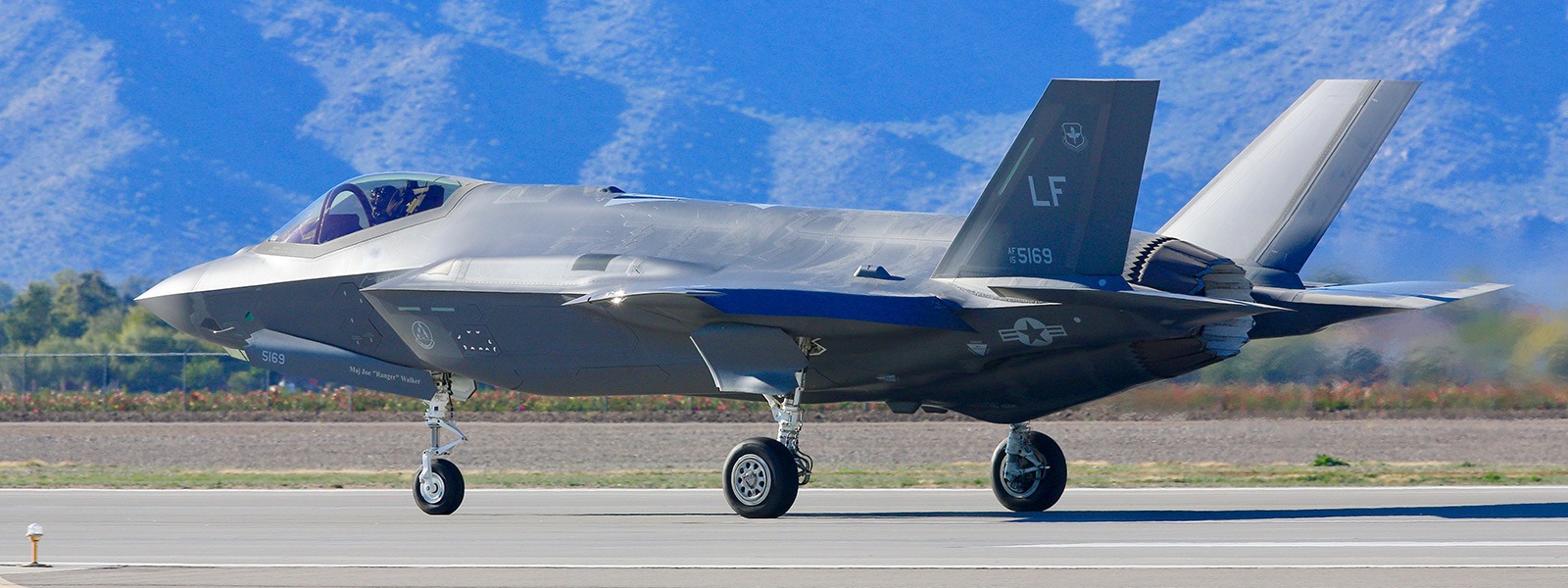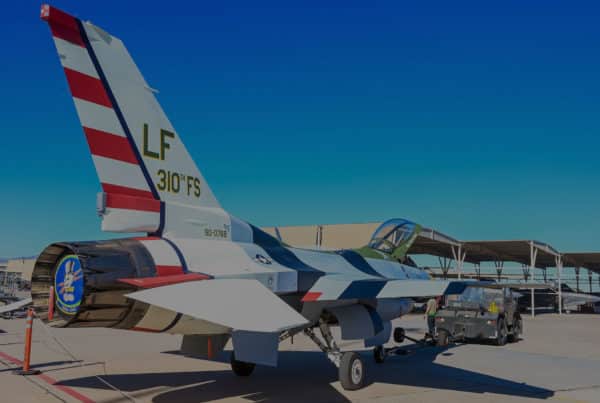By Mark Carlisle
Independent Newsmedia
Article originally published at Yourvalley.net on March 26, 2019
Two construction projects for the F-35 combat jet totaling $40 million at Luke Air Force Base that might have been defunded to pay for President Donald Trump’s border wall are safe, according to a letter sent by the Pentagon last month.
Projects at two other Arizona bases are also safe, according to the letter, but funding for a $30 million building at Fort Huachuca in Sierra Vista would likely be delayed should the president’s emergency declaration be upheld.

“(The) F-35 program is hugely invaluable and very important… It’s vital to our national defense, and we need to protect it,” said Rep. Debbie Lesko, whose district in the West Valley contains Luke AFB.
Two Luke AFB construction projects for buildings to support a new squadron for the top-of-the-line F-35A jets were among hundreds of military construction projects, totaling $12.9 billion, that could have been defunded through Mr. Trump’s declaration of a national emergency in February to pay for $3.6 billion toward a goal of $8.1 billion for a border wall or fence along the U.S.-Mexico border. The projects have been scheduled but not yet officially awarded the federal funds needed for completion.
Last month, acting Defense Secretary Patrick Shanahan released a letter stating that no military projects with award dates in the military’s current fiscal year, which ends Sept. 30, will be impacted for the emergency funds. This includes both of Luke AFB’s projects, which both have an award date in June. The letter also stated no military housing projects will be impacted.

“I guess bottom line is, just like the city or anyone else, once you get you know eye-ball-deep in a project, you’re not going to not fund it,” said Glendale Mayor Jerry Weiers.
Luke AFB’s projects are for two buildings to support the base’s sixth and final F-35 squadron: $23 million for a maintenance building and $17 for a squadron operations building.
“We have not received any confirmation that Luke will be impacted by discussions to reallocate funding to build the border wall,” Luke AFB spokeswoman Major Rebecca Heyse said in an emailed statement. Ms. Heyse said the base did not have any additional statement in reaction to Mr. Shanahan’s letter.
The criteria laid out in the letter is only a plan, and not official, but a change of the plan would require Mr. Shanahan to change his mind or for a new defense secretary with differing views on the matter to replace him. The law that allows Mr. Trump to access the military construction funds for a national emergency, section 2808 of the U.S. code, grants the secretary of defense, Mr. Shanahan, the authority to select which projects will be defunded to provide the emergency funds.
A $14.8 million project at Camp Navajo in Bellemont and a $15 million Davis-Monthan Air Force Base in Tucson both have award date before Sept. 30, meaning those projects would also be safe.
With an award date of May 2020, the scheduled construction of a $30 million ground transport equipment building at Fort Huachuca is the lone Arizona project that could still be in jeopardy.
Adding the stipulations that projects eligible to be defunded must be non-housing projects with award dates of Oct. 1 or beyond whittles down original pool of $12.9 billion worth of initiatives to $4.35 billion worth of initiatives that are actually vulnerable. Mr. Trump plans to use $3.6 billion, or 83 percent, of that amount for his border wall, making it likely that the Camp Huachuca project be defunded.
Both the White House and a Pentagon official have promised that any military construction projects will not be cut but delayed, with funding “back-filled” in another year’s budget.
There is also a chance that none of the listed projects will be impacted if the president’s emergency declaration does not become law. Last month, both the House and Senate passed resolutions to terminate the president’s emergency declaration, but Mr. Trump issued the first veto of his presidency to override the votes. The House scheduled a vote for Tuesday, March 26 to try to reach a two-thirds majority to override the vote, but, as of press time, it is not expected to succeed. Neither the House or Senate had a two-thirds majority in the initial vote.
The declaration still faces several legal challenges from Democratic state attorneys general and environmental groups who argue the emergency declaration was unconstitutional.
“Ultimately, it will probably end up in the United State Supreme Court will be my guess,” Ms. Lesko said.
In his speech announcing the emergency declaration, Mr. Trump also said he anticipates the declaration’s fate will be determined in the Supreme Court. The Court has a 5-4 conservative majority.
Twelve of 13 other U.S. F-35 projects across the country and at a base in the United Kingdom have award dates before Sept. 30 and are considered safe. The only F-35 project still in jeopardy is a $19 million Combat Arms Training and Maintenance Range at Eielson Air Force Base in Alaska.
Construction of a border wall doesn’t have to wait for the outcome of the challenges to the emergency declaration. Congress appropriated $1.375 billion for the wall in the funding bill that triggered Mr. Trump’s emergency declaration after the bill fell far short of the $5.7 billion he asked Congress for.
Funds from the Department of Defense’s drug interdiction program will provide $2.5 billion, and $600 million will is available from the Treasury Department’s drug forfeiture program. Neither of those funds require a national emergency, meaning the president has nearly $4.5 billion to begin on a border wall while the emergency is going through the courts.
“So, he has quite a bit of money there to start on the project,” Ms. Lesko said.








